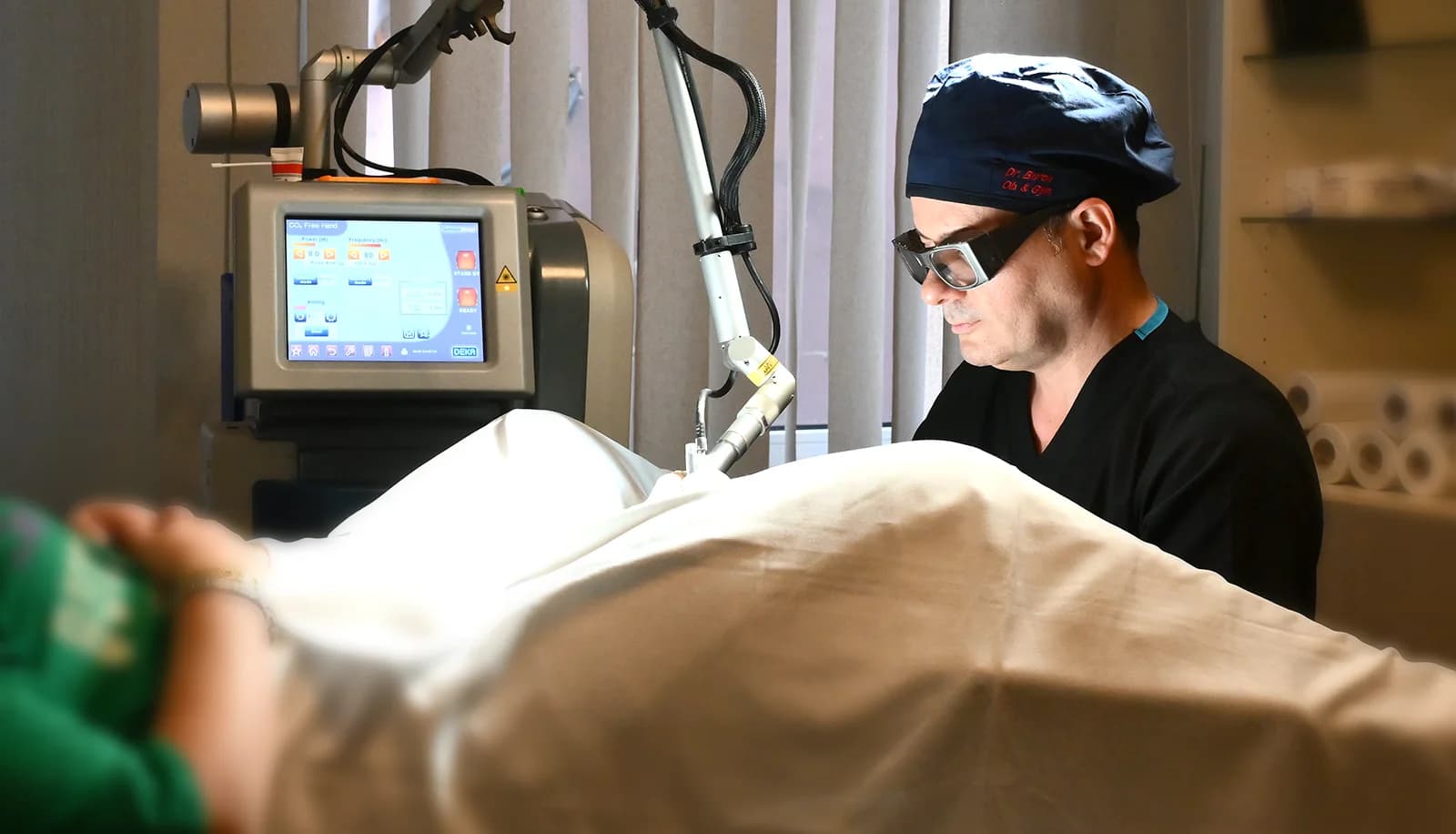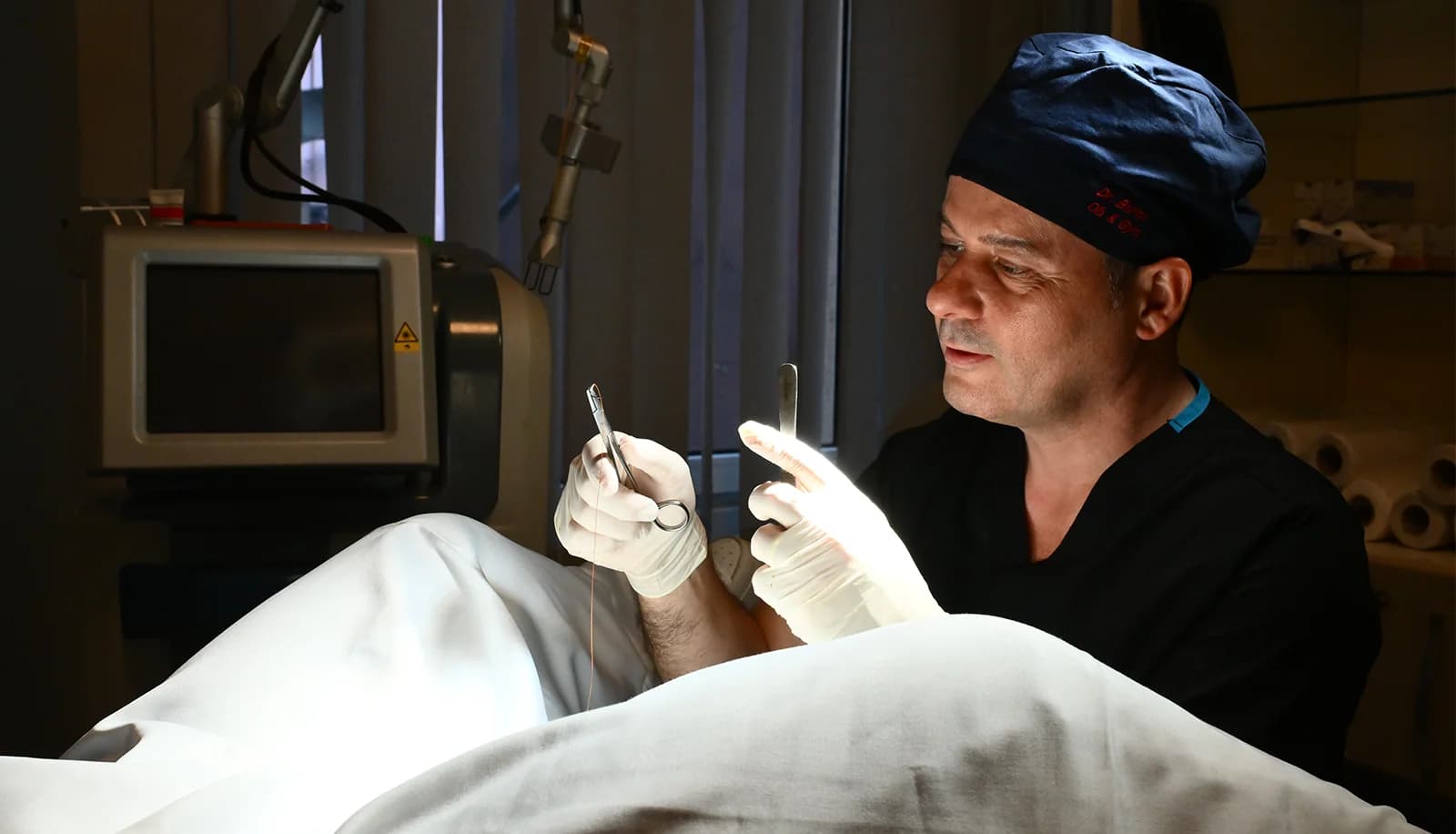
What is Hymen Repair Performed?
GYN Surgeon Dr. Korkut Arslan
What is Hymen Repair Performed?
Hymen repair can be performed using two different techniques, known as temporary and permanent methods. These two approaches involve significantly different techniques. Temporary hymen repair is done by placing stitches with special threads in the area where the hymen was torn during previous intercourse. Permanent hymen repair, on the other hand, involves creating a new membranous tissue by harvesting tissue from beneath the hymenal area using a special microsurgical method called the flap technique.

The main difference between the two methods is that the temporary repair must be performed 3–4 days before the expected intercourse, while the permanent hymen repair can be done at any time, regardless of when intercourse is anticipated.
Quick Menu
In the following sections of this page, you can find the topics listed below. Simply tap on any heading to quickly access the relevant section.
- How Is Permanent Hymen Repair Performed?
- How Is Temporary Hymen Repair Performed?
- Can the Hymen Be Permanently Repaired?
- Can the Hymen Be Repaired at Any Time?
- Can Hymen Repair Be Done with Laser?
- Why Is Hymen Repair Performed?
- Can the Hymen Be Repaired After an Abortion?
- Can the Hymen Be Repaired After Childbirth?
How Is Permanent Hymenoplasty Performed?
Learn More About ABORTION
Feel Free To Consult Our Doctor


My assistants are currently online and ready to assist you with anything you need.
How Is Permanent Hymen Repair Performed?
Permanent hymen repair is performed by lifting several layers of tissue from the vaginal wall in the hymenal region using a technique called the flap technique. A new vascularized, membrane-like tissue resembling the original hymen is created. The purpose of creating this new tissue is to form a barrier at the entrance, so that during intercourse, it tears and bleeds similarly to a natural hymen.

How Is Temporary Hymen Repair Performed?
Temporary hymen repair is done by suturing the remnants of the torn hymen using special threads. The procedure involves:
- Positioning the patient on a gynecological chair
- Applying local anesthesia
- Suturing the torn hymenal tissue to bring it back together

Can the Hymen Be Permanently Repaired?
The hymen can be permanently repaired using a microsurgical method called the flap technique. 'Permanent' means that the newly created vascularized membrane will maintain its function indefinitely, regardless of when intercourse occurs. Even after years, the first intercourse will cause bleeding, just like in a natural hymen.

Can the Hymen Be Repaired at Any Time?
Hymen repair can be performed at any time the individual wishes. However, it is important to consider the timing of the expected intercourse. If intercourse is planned within a few days, the temporary method is recommended; if the date is uncertain, the permanent method is preferred.

In conclusion, temporary hymen repair should be done 3–4 days before intercourse, whereas permanent repair should ideally be performed about 1 month in advance, considering the healing process.
Can Hymen Repair Be Done with Laser?
Both temporary and permanent hymen repair can be performed using laser technology. Laser is used during the procedure for incisions and tissue lifting. Especially for permanent repair, using a laser results in a more comfortable recovery and a shorter healing period.

Why Is Hymen Repair Performed?
In societies where virginity holds significant importance, men often cannot accept their partners having had previous sexual experiences. Therefore, in cultures where the hymen is considered a taboo, many brides-to-be choose hymen repair to relieve the societal pressure.

Can the Hymen Be Repaired After an Abortion?
Yes, hymen repair can still be performed after an abortion. Having undergone an abortion does not prevent hymen repair using either the temporary stitching method or the permanent flap technique. A woman who has had an abortion can undergo hymen repair, and just like someone who has never had an abortion, bleeding will occur during the first intercourse after the procedure.

Can the Hymen Be Repaired After Childbirth?
Permanent hymen repair using the flap technique can be performed even after childbirth. Regardless of the number of sexual encounters, whether the delivery was vaginal or cesarean, or whether an abortion was performed, the hymen can be repaired. It can even be done in women who have not had intercourse but have naturally elastic hymenal tissue.

Learn More About ABORTION
Feel Free To Consult Our Doctor


My assistants are currently online and ready to assist you with anything you need.
frequently asked questions
More Content
Learn More About ABORTION
Feel Free To Consult Our Doctor


My assistants are currently online and ready to assist you with anything you need.
CONSULT YOUR DOCTOR
Fill out the form to get solutions from our doctor about your health and aesthetic concerns!
























